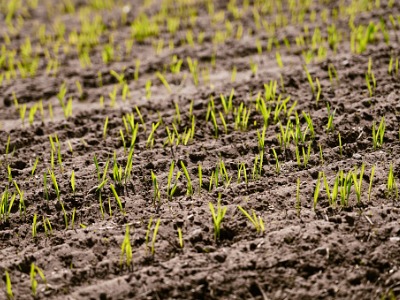Grass after maize could boost much needed forage stocks
Producers should avoid leaving maize stubble exposed after harvest. The site can experience significant nutrient losses from leaching during poor weather conditions, leading to soil erosion. Reseeding with a grass ley will provide long lasting benefits, including utilising the existing nutrients in the soil.
Short-term grasses such as Westerwold or Italian Ryegrass can provide an early bite at the start of spring, or alternatively, can offer a quality first-cut silage. These grasses are vigorous and extremely quick to establish, even at lower temperatures of 3˚C. This enables the ley to get going before the winter period leading to earlier spring growth. While only short-term these species are very productive which means that weather permitting, growers will be able to take a high yielding and excellent quality cut of silage before preparing the field for the next crop.
Keeping the ley down for two years? If you are not 100% sure of your rotation, then use Tower. It is a two-year ley made up of 100% Italian Ryegrass which is quick to establish and produces a bulky silage. It is a good quality high yielding crop which is winter hardy and again will establish at 3 degrees rather than the standard 5 degrees, which is the case for many other grasses.
Focus on Westerwolds
Westerwolds have the ability to germinate at lower temperatures than conventional leys, and after a Maize harvest can be sown safely throughout October (as long as weather conditions allow). Westerwold ryegrass can produce a grass sward and catch crop for soil stability and help to mop up nutrients making them an ideal cover crop for arable rotations. These can also help to improve soil health, structure, fertility and organic matter, resulting in improved yields and financial savings as well as providing other benefits.
Cover crops can bring agronomic and environmental benefits with their active growth, deep rooting ground cover and habitat provision, providing benefits in rotations over a bare fallow and helping to reduce nutrient losses via run-off, leaching and soil erosion. An overwintering feed source for livestock or with the possibility of an early silage crop the following spring.
Rapid Green is a 10kg per acre Westerwold blend of at least two varieties packed in 20kg bags.
If we have a warm and moist autumn, then Tower will grow quickly and could provide either late grazing this season or early spring grazing and first cuts. However, this is weather dependent, and despite the shortage of grazing this year, farmers need to avoid poaching as this can cause long-term damage.
After maize harvest grass reseeding is simple, as little working down is required. One pass with the discs to ensure a fine and firm seedbed is usually sufficient prior to drilling.
If reseeding with a long-term ley, it is important to remove weeds before establishment, during which time it is possible to achieve 100% weed control. For short-term mixtures however, the grass will establish at a quicker rate than any weeds, so herbicide applications won’t be required.
Home-grown forage will always be the cheapest feed available and grass after maize is an opportunity to bolster forage this year and in preparation for next year.


Looking for advice?
For more information speak to your Wynnstay Specialists, you can find your specialist here.











